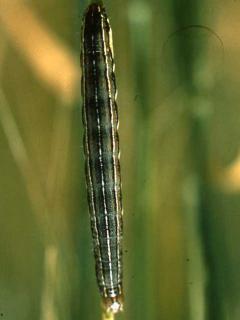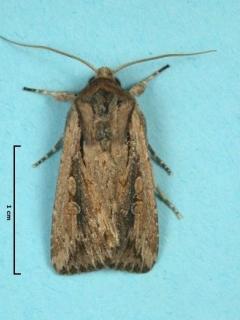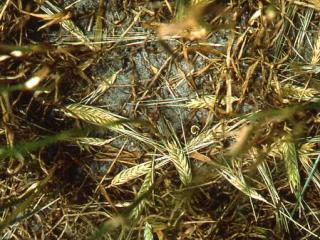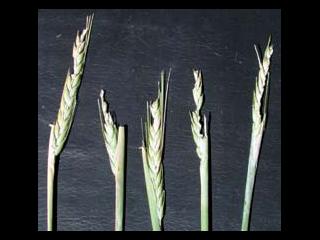Recognising armyworm in crops
The first visible sign of armyworm caterpillars is often their green to straw-coloured droppings, about the size of a match head, found on the ground between the cereal rows.
Damage to weeds, especially their preference for ryegrass, is also a sign of their presence.
In barley crops
In barley crops, chewed leaves, heads and awns can be apparent, although the first sign is usually barley heads on the ground. As barley matures, part of the stem often remains green and appetising after other parts have dried. The caterpillars chew through this part causing the heads to fall to the ground.
In oat crops
In oat crops, the caterpillars bite off pieces of the panicle, causing grain to fall.
In wheat crops
Wheat crops are less frequently attacked and usually minor damage is caused as compared to damage in barley crops.
Where to look for armyworm
Caterpillars of various sizes up to 4cm long may be seen in the crop. They may be on the plant or under leaf litter on the ground.
Description
The caterpillars hatch from batches of eggs laid in crevices, such as under the sheathing at the base of leaves. Caterpillars undergo a series of moults before reaching their full size of about 40mm long. They are fat and smooth and may be distinguished by the three parallel white stripes on the collar just behind the head.

When mature, the armyworm caterpillars burrow in soil to form pupae.
Adult moths emerge from the pupae.

Four species of armyworm occur in barley growing areas. They are distinguishable in the moth stage; all are stout-bodied, light brown to grey moths with a length of about 30mm. Along the south coast, the most abundant species is the common armyworm (Leucania convecta).



